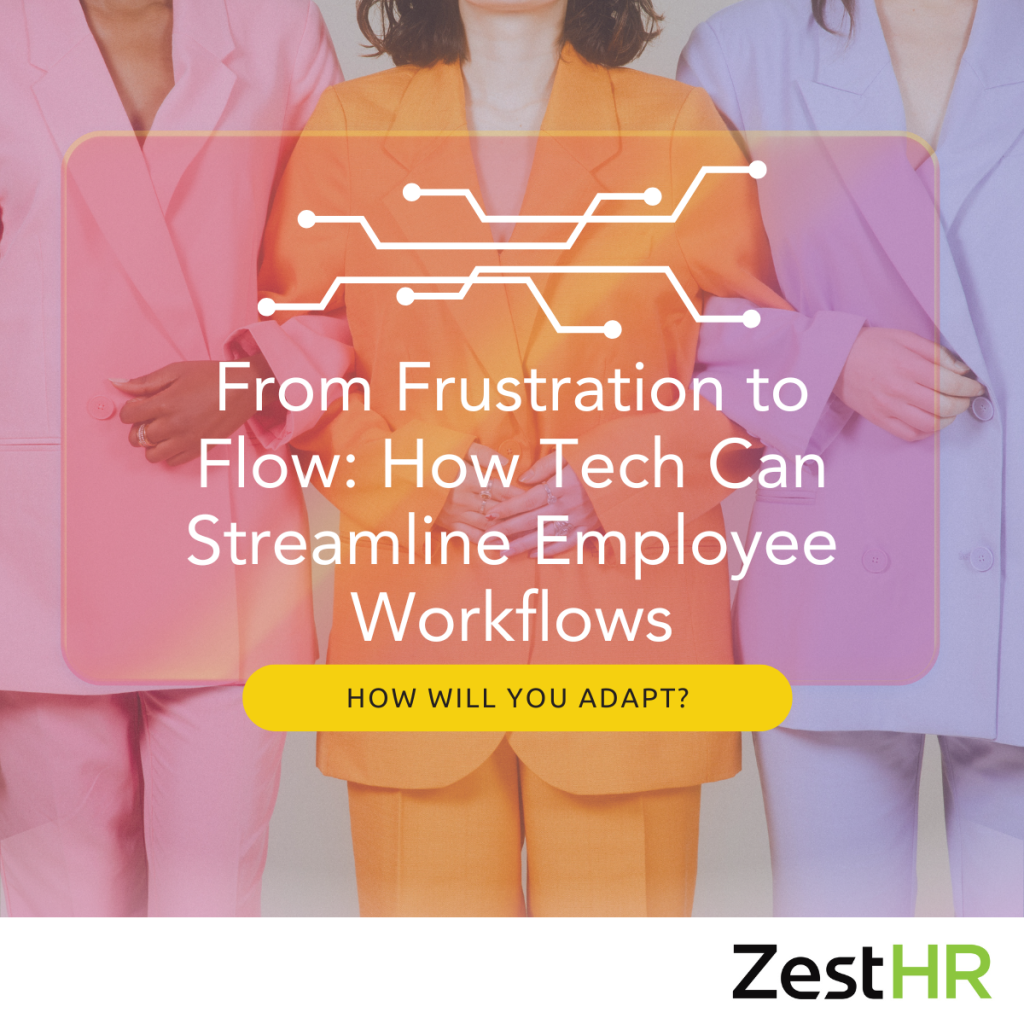

In today’s fast-paced work environment, employees are constantly juggling multiple systems, platforms, and processes. Instead of focusing on meaningful, high-impact work, they often find themselves bogged down by clunky tools, repetitive tasks, and inefficient workflows.
The result? Frustration, disengagement, and wasted time.
But what if technology could remove those roadblocks and create flow—where work feels seamless, efficient, and even enjoyable? The good news is that smart tech solutions are already transforming employee workflows, turning frustration into effortless productivity.
The Cost of Inefficient Workflows
A recent study by Asana’s Anatomy of Work Report found that 60% of an employee’s time is spent on “work about work”—things like chasing approvals, searching for documents, and switching between apps. Only 26% of their time is spent on deep, skilled work that truly adds value.
This inefficiency is more than an annoyance—it’s a business risk. Research from Gartner shows that organisations with poor workflow management experience:
🚨 Lower productivity – Employees waste time on redundant admin tasks.
📉 Higher burnout rates – Frustration leads to disengagement and turnover.
❌ More costly errors – Manual processes increase the likelihood of mistakes.
💸 Lost revenue opportunities – Slow workflows impact customer service and innovation.
So, how can businesses remove friction and create a smoother employee experience? The answer lies in workflow automation, AI, and integrated technology.
How Tech Can Move Work from Frustration to Flow
The key to seamless workflows isn’t just adding more tech—it’s using the right tech in the right way. Here are three major ways businesses can eliminate friction and boost efficiency:
Manual, repetitive tasks drain energy and kill motivation. Tech solutions like AI-powered automation and workflow management tools can free up employees to focus on higher-value work.
🔹 Example: Instead of employees manually entering data, AI-powered tools like Zapier, Microsoft Power Automate, or ServiceNow can integrate different systems and automate data transfers in real time.
🔹 Case Study: Australia’s NAB (National Australia Bank) has integrated AI-powered automation into its customer service teams, reducing manual processing time by 40% and allowing employees to focus on more complex, relationship-driven tasks.
💡 Pro Tip: Identify recurring tasks that take up valuable time (e.g., approval processes, reporting, email sorting) and explore automation solutions.
Employees constantly switch between tools—email, chat, project management platforms, CRMs, and HR systems. This context switching wastes time and breaks concentration. The solution? Unified platforms that connect key business functions.
🔹 Example: A company using Slack, Jira, and Google Drive separately can consolidate them into one platform with integrations, so employees don’t need to jump between apps to find information.
🔹 Case Study: Atlassian (an Australian-born tech giant) has streamlined its own workflow processes by integrating Jira, Confluence, and Trello, reducing the time employees spend searching for information.
💡 Pro Tip: Evaluate your company’s tech stack—are there too many disconnected tools? Look for integrations that allow data and workflows to move seamlessly across platforms.
Many companies collect data but don’t use it effectively. AI-powered analytics can provide real-time insights into employee productivity, workflow bottlenecks, and areas for improvement.
🔹 Example: Tools like Workday or Microsoft Viva provide AI-driven insights into employee engagement, helping leaders understand where workflow improvements are needed.
🔹 Case Study: CSIRO, Australia’s leading scientific research organisation, has used AI-powered data analytics to optimise project workflows, reducing administrative overhead and improving decision-making.
💡 Pro Tip: Start leveraging AI-powered dashboards to track workflow trends and make data-driven improvements.
Final Thoughts: Tech as the Enabler, Not the Disruptor
The right tech strategy isn’t about adding complexity but simplifying work and enhancing flow. By automating mundane tasks, integrating systems, and leveraging AI-driven insights, businesses can empower employees to do their best work—without unnecessary frustration.
The question isn’t whether technology will transform workflows—how quickly businesses will adapt to stay ahead.

© Copyright Zest HR Partners Pty Ltd 2022 – 2025 | Privacy Policy | Terms & Conditions